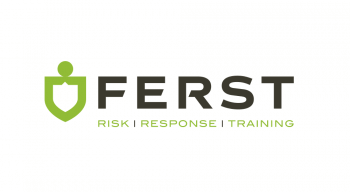Evacuation Diagrams
Evacuation Diagrams are mandatory and site specific to assist all people within a building to exit safely. They are installed in positions stipulated by the Australian Standard and exceed AS3745-2010
New Diagrams
Work Health and Safety Regulation 2011 directs that Evacuation Diagrams must be placed in every workplace, regardless of size. These diagrams are placed at eye height in public spaces such as hallways, offices and warehouses. They show the layout of the premises, the location of safety equipment and the evacuation route. New buildings, or previously un-diagramed buildings will require new diagrams to be produced by our diagram technicians. This process includes a site audit to assess the site in order to produce accurate, high quality and compliant diagrams. If no major changes or demolitions occur, these diagrams remain compliant for 5 years.
Compliance Updates
Compliance updates ensure that all diagrams within a premises meet the Australian Standards. These updates are required every 5 years or when building structure, building egress or first-attack firefighting equipment changes. The compliance date is recorded on each evacuation diagram.
Self Audited Diagrams
Our Self Audit Evacuation Diagram option allows businesses to save time and costs. Using this option, businesses conduct their own site audit, with the guidance of our easy to follow guide, before sending the data to our diagram technicians. This option reduces costs associated with travel and site audits, while also allowing us to serve more businesses across all of Australia.
Emergency Management Plans
Work Health and Safety Regulation 2011 directs that all organisations/facilities must have an emergency management plan that outlines procedures, roles and responsibilities and communication requirements.
Emergency Procedure Manuals
An emergency management plan is often detailed in the form of an Emergency Procedure Manual. These organisation and site-specific manuals are a comprehensive guide to everything you need to know and do for all types of emergencies.
Emergency Response Flipcharts
For smaller organisations, the emergency procedure plan may be in the form of a flip chart. These easy to use charts contain all necessary information in a compact and concise form. These must be kept on premises and staff members must be aware of the contents.
Block Plans
Block Plans are positioned within a facility near to critical fire and life safety equipment. These plans are used by the fire brigade and other emergency services should they need to attend an emergency. It provides these services with the critical information, specifications and data required to make fast and controlled decisions.
Zone Block Plans
AS1670.1 requires an automatic smoke detection and alarm system to include a zone block plans at the Fire Panel and mimic panels.
EWIS Block Plans
AS1679.4 requires an Emergency Warning and Intercommunication System to incorporate an EWIS block plan at the Fire Panel.
Sprinkler Block Plans
AS2118.2 requires all automatic fire sprinkler systems to include a sprinkler block plan located at each set or group of installation control assemblies.
Fire Hydrant Block Plans
AS2419.1 requires fire hydrant systems to incorporate a fire hydrant black plan located at the fire brigade booster assemblies, fire control room and pump room.
Tactical Fire Plan
Tactical fire plans provide details on a buildings active and passive fire protection equipment and provide essential instructions for their operation in case of a fire. National Construction Code requires tactical fire plans in buildings with an effective height of more than 25m and a class 6, 7, 8 or 9 building with a total floor area of more than 18,000m²
